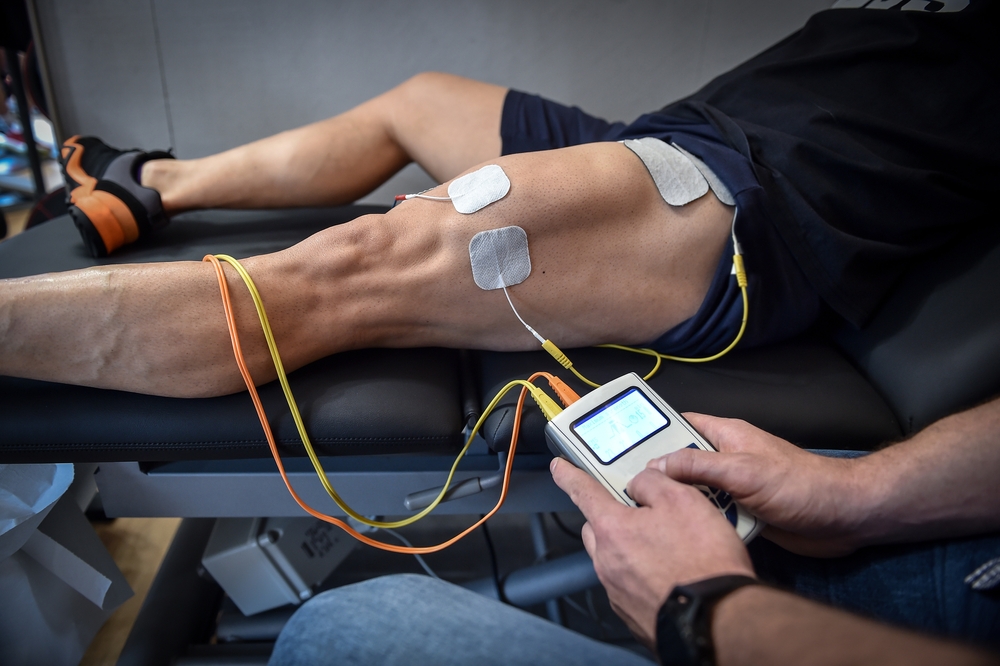The Science Behind Electrical Muscle Stimulation in Physical Therapy

Dealing with muscle pain can feel frustrating. It is tough when your body does not cooperate. But there is a tool that can help: electrical muscle stimulation.
This method can help you heal without wearing yourself out. Its research shows real results. It might be the boost you need to regain your strength and feel like yourself again.
What Is Electrical Muscle Stimulation?
EMS uses gentle electrical pulses to help muscles move. Imagine it like a friendly nudge, reminding your muscles to wake up. Therapists use it to help with exercises when it is hard to move alone.
How Does EMS Speed Up Recovery?
When you are healing, everything feels tough. That feeling is entirely normal. EMS can help with recovery when muscles struggle to connect with nerves.
It uses electrical stimulation to keep your muscles active and boost blood flow. More blood brings more oxygen and nutrients. This helps your body heal better. EMS also releases endorphins, which can help relieve pain.
If you are dealing with constant discomfort, those little wins matter. Daily activities may feel more effortless. That relief can make a huge difference in how you feel. It is all about finding small steps to get back on track.
When Do Therapists Recommend EMS?
EMS is not a one-size-fits-all solution. It works best for specific scenarios:
Rebuilding strength after surgery (e.g., knee replacements)
Managing arthritis or lower back pain
Restoring mobility in stroke patients
Preventing muscle loss during prolonged immobilization
Enhancing athletic performance or injury prevention
Therapists use EMS along with stretches, manual therapy, and home exercises. This creates an adaptable and balanced treatment plan.
The Brain-Muscle Connection: Why Timing Matters
Your brain talks to your muscles through electrical signals. If you hurt yourself, this system might not work well. You might feel like your muscles are being lazy or forgetful. EMS can help remind your body how to move right.
Is EMS Safe?
Are you wondering about EMS and safety? It is normal to have concerns. When a trained pro does it, the risks are low. You might feel a slight tingle or small muscle movements, but it should not hurt.
Not everyone should try EMS, though. If you have a pacemaker or other heart issues, it is best to skip it. A good therapist will know your history and make sure everything is just right for you. It is all about feeling safe and comfortable.
Debunking Myths About Electrical Stimulation
A lot of people think EMS is a quick fix for getting fit. But it is not. EMS cannot replace hard work. It helps with things like recovery and getting your form back on track.
Finding the Right Provider
Not all clinics offer EMS. Look for a licensed physical therapist with experience in neuromuscular electrical stimulation (NMES) or functional electrical stimulation (FES). Ask questions:
How often will I need sessions?
What exercises should I do at home?
How will you measure my progress?
A good provider will explain each step and set realistic expectations.
Feeling frustrated with slow healing or limited movement? You are not alone. Many people experience this and wonder if they will ever feel better. EMS might be the answer you need, working with your body and helping you recover.
For more on Electrical Muscle Stimulation, visit Castelli Chiropractic Center at our Jacksonville, Florida, office. Call (904) 320-0409 to book an appointment today.
https://www.physio-pedia.com/Neuromuscular_and_Muscular_Electrical_Stimulation_(NMES)
https://www.medicalnewstoday.com/articles/electrical-muscle-stimulation









